Springfield Armory 1911 45ACP 4" LightWeight Champion Operator PX9115LP For Sale
$799.97
The Springfield Armory 1911 45ACP LightWeight Champion Operator PX9115LP is a notable firearm for those who appreciate a combination of traditional design with contemporary enhancements. It stands out as the first 1911 from a major manufacturer incorporating a light-mounting rail directly into its frame, utilizing a Standard Picatinny platform for compatibility with lighting and laser devices, thus favored by military and law enforcement units. The pistol, chambered in 45ACP, features two 7-round blued steel magazines, a precision 4-inch stainless steel match-grade barrel, and tritium 3-dot enhanced sights for reliable performance in varying light conditions. Its design includes a high-quality aluminum alloy frame with a black hardcoat anodized finish, a robust forged steel slide with Black Armory Kote treatment, and an efficient recoil management system with a dual spring and full-length guide rod. Weighing 31 ounces with an empty magazine and measuring 7.5 inches in length and 5.5 inches in height, the Champion Operator offers a portable yet stable firearm option, ideal for high-demand scenarios that require unwavering reliability.
Why do 1911s jam so much?
The 1911 pistol, designed over a century ago by John Browning, can experience jamming for several reasons, though it’s not inherently more prone to jamming than other semi-automatic pistols when properly maintained and used under appropriate conditions. However, potential reasons for jamming include:
1. **Magazine Issues**: Original or poorly constructed magazines can cause feeding problems. Ensuring high-quality magazines are used can mitigate this issue.
2. **Ammunition**: The 1911 was originally designed for .45 ACP, and using ammunition that’s incompatible or of poor quality can lead to jams.
3. **Maintenance**: Lack of proper cleaning and lubrication can cause the gun to malfunction, as with any firearm.
4. **Wear and Tear**: Older models or those used extensively without maintenance might have worn parts that need replacing.
5. **Spring Tension**: Incorrect recoil or extractor spring tension can also cause feeding and ejection issues.
6. **Tolerances**: Some 1911s, especially those built to tighter tolerances for competition, can be more sensitive and require more careful maintenance and handling.
Addressing these factors with regular maintenance, proper ammunition, and quality components can significantly reduce jamming issues.
What 1911 did Chris Kyle use?
Chris Kyle used a Springfield Armory TRP (Tactical Response Pistol) Operator 1911.
Is a 1911 better than a Glock?
The question of whether a 1911 is better than a Glock is subjective and depends on various factors such as personal preferences, intended use, and specific requirements. Here are some points to consider:
**1911:**
– **Pros:**
– Classic design with historical significance.
– Generally has a single-action trigger, which some users find more conducive to accuracy.
– Durable all-metal construction, often made of steel.
– Typically chambered in .45 ACP, a caliber valued for its stopping power.
– **Cons:**
– Lower magazine capacity compared to many modern pistols like the Glock.
– Heavier due to the metal construction.
– Could require more maintenance to ensure reliability.
**Glock:**
– **Pros:**
– High reliability and simplicity of operation.
– Larger magazine capacity.
– Lightweight due to polymer construction.
– Often offers a wider range of models and calibers to choose from.
– **Cons:**
– Some shooters may not prefer the trigger feel compared to a 1911.
– Perceived as less aesthetically pleasing by some due to its utilitarian design.
Ultimately, whether a 1911 or a Glock is better can depend on the shooter’s needs, such as the intended use (e.g., self-defense, competition, or collecting), personal ergonomic preference, and aesthetic taste. It’s recommended to try both platforms and evaluate based on personal comfort, performance, and intended usage scenario.
What is the weakness of the 1911?
The 1911 pistol, although a classic and widely respected firearm, has a few weaknesses:
1. **Capacity**: The standard 1911 typically has a single-stack magazine, offering limited ammunition capacity compared to more modern double-stack handguns.
2. **Weight**: The all-steel construction of traditional 1911s makes them relatively heavy, which can be a disadvantage for carrying and handling over extended periods.
3. **Complexity for Maintenance**: The 1911 has a more intricate design that can make disassembly, cleaning, and maintenance more complicated for inexperienced users.
4. **Reliability Concerns with Some Variants**: While high-quality models are generally reliable, some lower-end or poorly maintained 1911s can experience feeding and ejection issues.
5. **Ergonomic Limitations**: Some users find the design less ergonomic compared to more modern pistols, which can affect handling and comfort.
These factors do not necessarily diminish the value or effectiveness of the 1911 but can be points to consider depending on the user’s needs and preferences.
What pistol is known for jamming?
The early models of the M9 pistol (Beretta 92FS) were sometimes criticized for jamming issues due to primarily subpar magazines during certain operational conditions.
What is the most common problem with the 1911?
The most common problem with the 1911 handgun is reliability issues, often due to improper fitting or quality control in some models. This can manifest as failures to feed, eject, or extract, stemming from issues like poor magazine quality, improper extractor tension, or insufficient lubrication and maintenance. Ensuring quality parts and regular upkeep can mitigate these issues.
What 1911 does the FBI use?
The FBI has used various models of the 1911 pistol over the years, but the most notable is the Springfield Armory Professional Model 1911. This custom 1911 was used by the FBI’s Hostage Rescue Team (HRT) and other specialized units. It is specifically designed to meet the FBI’s rigorous requirements for accuracy, reliability, and performance.
What caliber did Chris Kyle make his longest shot with?
Chris Kyle made his longest recorded sniper shot with a .338 Lapua Magnum rifle.
Did Chris Kyle shoot a sniper?
Yes, Chris Kyle, an American Navy SEAL sniper, claimed to have shot and killed an enemy sniper during his service, as detailed in his autobiography, “American Sniper.” However, specific details about individual engagements with enemy snipers are not publicly verified.
Are 1911s high maintenance?
Yes, 1911 pistols are often considered high maintenance compared to more modern firearms. Their design is intricate, requiring regular cleaning, lubrication, and inspection to ensure reliable performance. The parts need to fit together precisely, and any dirt or lack of lubrication can affect their function. Regular maintenance helps in preserving the firearm’s performance and longevity.
Is a striker fired better than a 1911?
The question of whether a striker-fired pistol is better than a 1911 is subjective and depends on individual preferences, needs, and intended use. Here are some factors to consider for both types:
**Striker-Fired Pistols:**
– **Trigger Action:** Generally have a consistent and relatively short trigger pull, as they don’t have an external hammer.
– **Ease of Use:** Simpler to operate, typically with fewer external controls.
– **Safety Features:** Often have built-in safeties (e.g., trigger safety) and no external safety to manipulate, which some users prefer for quick use.
– **Weight and Capacity:** Tend to be lighter and allow for higher magazine capacities.
**1911 Pistols:**
– **Trigger Feel:** Known for having a crisp and light single-action trigger, which some shooters find more precise.
– **Ergonomics:** Many shooters appreciate the feel of the 1911’s grip and the overall balance of the gun.
– **Customization:** Highly customizable with a wide array of aftermarket parts and upgrades.
– **Heritage and Aesthetics:** Valued for historical significance and often admired for their classic appearance and craftsmanship.
Ultimately, the choice may come down to personal preference, intended use (e.g., concealed carry, competition, range shooting), and how the firearm feels and performs in your hand. It may be beneficial to try both types to see which one aligns better with your needs and preferences.
What pistol do Navy SEALs prefer?
Navy SEALs prefer the Sig Sauer P226 as their standard-issue sidearm. It is known for its reliability and performance in various conditions.
How often do 1911s jam?
The frequency with which 1911s jam can vary based on several factors, including the specific model, its condition, the quality of the ammunition used, and how well the firearm is maintained. Generally, a well-maintained 1911 using good-quality ammunition should be reliable. However, as with any firearm, malfunctions can occur due to issues like poor maintenance, worn parts, or using the wrong type of ammunition. Regular cleaning and proper maintenance are essential in minimizing the risk of jams.
Do 1911s jam with hollow points?
Yes, 1911 pistols can sometimes experience jamming issues with hollow point ammunition. This is more common with older models or those with less refined feed ramps and extractors that aren’t optimized for hollow points. Modern 1911 variants are often designed or modified to handle a wider array of ammunition, including hollow points, more reliably. Regular maintenance and using high-quality ammunition can also help reduce the likelihood of jams.
Does a 1911 have a lot of recoil?
The 1911, which is a semi-automatic pistol typically chambered in .45 ACP, is known for having manageable recoil. While the .45 ACP round is relatively powerful, the design of the 1911, including its weight and balance, helps to absorb and distribute the recoil effectively. Many users find the recoil to be moderate and controllable, especially with practice. However, perception of recoil can be subjective and may vary depending on a shooter’s experience and technique.
| Sights | Fixed Low Profile Combat Rear, Dovetail Front, Tritium 3 – Dot |
|---|---|
| Trigger | Long Aluminum Match Grade, 5 – 6 lbs |
| Frame Material | Forged Aluminum Alloy with Integral Accessory Rail, Black Hardcoat Anodized |
| Slide | Forged Steel, Black Armory Kote |
| Overall Length | 7.5" |
Be the first to review “Springfield Armory 1911 45ACP 4" LightWeight Champion Operator PX9115LP” Cancel reply
Related products
Springfield Armory 1911
Springfield Armory 1911 5" .45ACP Stainless Steel Full Size PB9151LP
Springfield Armory 1911
Springfield Armory 1911 .45 ACP Mil-Spec Parkerized Handgun – PB9108LP
Springfield Armory 1911
Springfield Armory 1911 45ACP 4" LightWeight Champion Operator PX9115LP
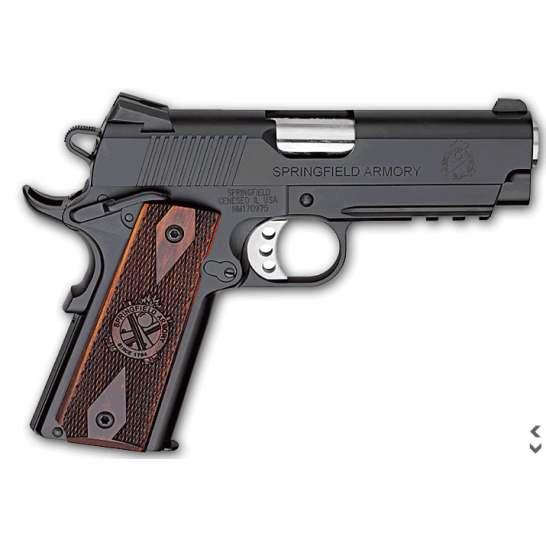
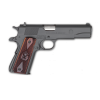
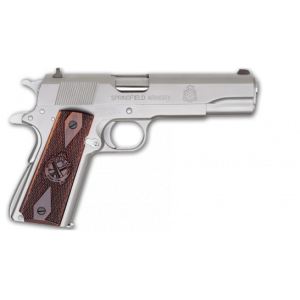
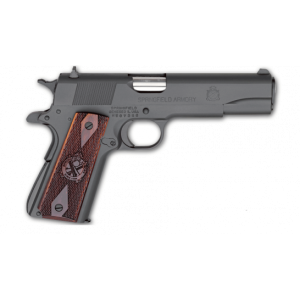
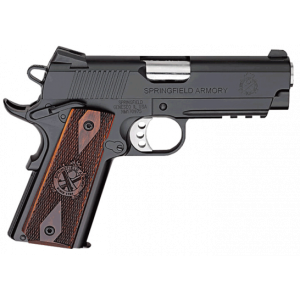
Reviews
There are no reviews yet.